Research reveals structure of key CRISPR complex
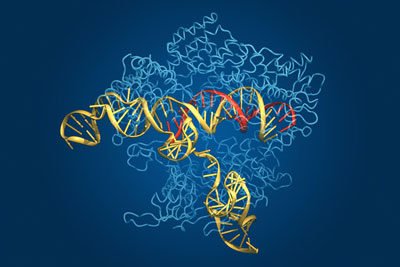 Work reveals how a genome-editing tool works to correct errors in the genetic code.
Work reveals how a genome-editing tool works to correct errors in the genetic code.
Feb 14th, 2014
Read more
 Subscribe to our Biotechnology News feed
Subscribe to our Biotechnology News feed
 Work reveals how a genome-editing tool works to correct errors in the genetic code.
Work reveals how a genome-editing tool works to correct errors in the genetic code.
Feb 14th, 2014
Read moreResearchers at Brigham and Women's Hospital (BWH) and Carnegie Mellon University have introduced a unique micro-robotic technique to assemble the components of complex materials, the foundation of tissue engineering and 3D printing.
Feb 12th, 2014
Read more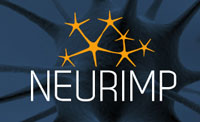 The European NEURIMP project sets out to select new biomaterials with optimum properties of biocompatibility, biodegradability and biotoxicity in addition to mechanical properties similar to those of the severed nerve.
The European NEURIMP project sets out to select new biomaterials with optimum properties of biocompatibility, biodegradability and biotoxicity in addition to mechanical properties similar to those of the severed nerve.
Feb 12th, 2014
Read more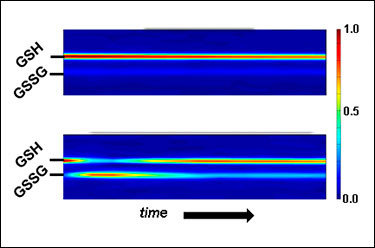 Researchers at the National Institute of Standards and Technology (NIST) have developed a new method for accurately measuring a key process governing a wide variety of cellular functions that may become the basis for a 'health checkup' for living cells.
Researchers at the National Institute of Standards and Technology (NIST) have developed a new method for accurately measuring a key process governing a wide variety of cellular functions that may become the basis for a 'health checkup' for living cells.
Feb 12th, 2014
Read more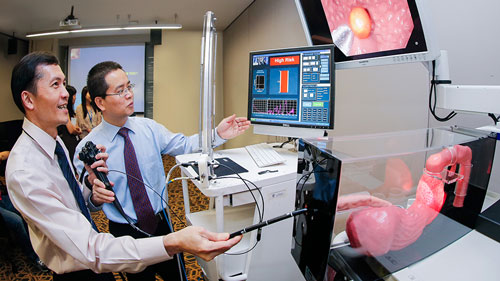 In-Vivo Molecular Diagnostic System developed by NUS team makes objective, real time cancer diagnosis during endoscopic examination a reality.
In-Vivo Molecular Diagnostic System developed by NUS team makes objective, real time cancer diagnosis during endoscopic examination a reality.
Feb 11th, 2014
Read more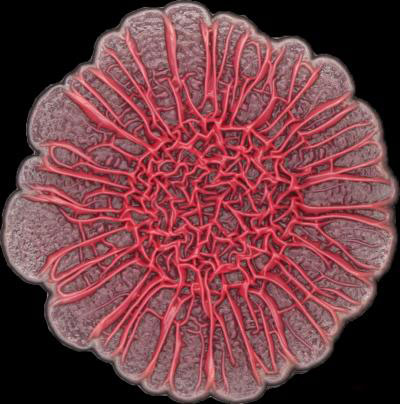 CMOS technology provides new insights into how biofilms form.
CMOS technology provides new insights into how biofilms form.
Feb 10th, 2014
Read more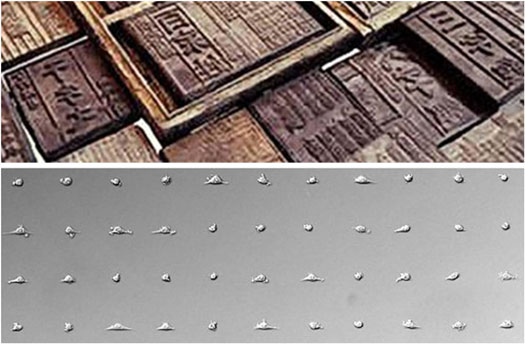 With a nod to 3rd century Chinese woodblock printing and children's rubber stamp toys, researchers in Houston have developed a way to print living cells onto any surface, in virtually any shape. Unlike recent, similar work using inkjet printing approaches, almost all cells survive the process.
With a nod to 3rd century Chinese woodblock printing and children's rubber stamp toys, researchers in Houston have developed a way to print living cells onto any surface, in virtually any shape. Unlike recent, similar work using inkjet printing approaches, almost all cells survive the process.
Feb 10th, 2014
Read more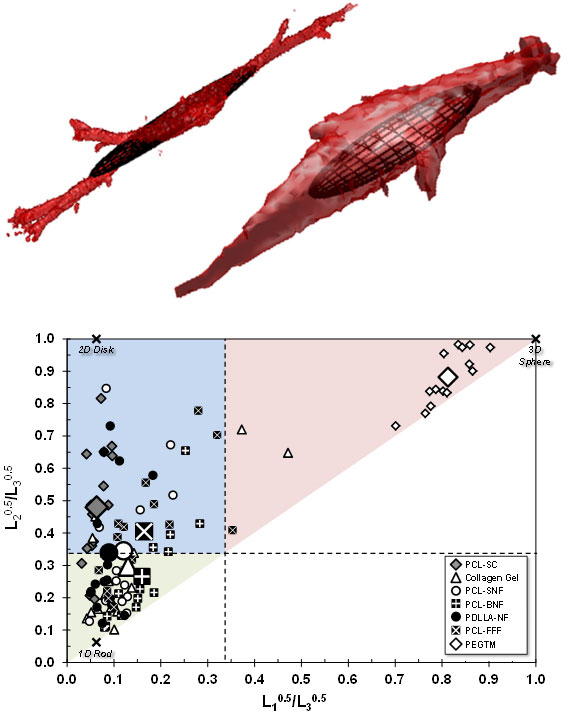 Getting in the right shape might be just as important in a biology lab as a gym. Shape is thought to play an important role in the effectiveness of cells grown to repair or replace damaged tissue in the body. To help design new structures that enable cells to "shape up," researchers at the National Institute of Standards and Technology (NIST) have come up with a way to measure, and more importantly, classify, the shapes cells tend to take in different environments.
Getting in the right shape might be just as important in a biology lab as a gym. Shape is thought to play an important role in the effectiveness of cells grown to repair or replace damaged tissue in the body. To help design new structures that enable cells to "shape up," researchers at the National Institute of Standards and Technology (NIST) have come up with a way to measure, and more importantly, classify, the shapes cells tend to take in different environments.
Feb 10th, 2014
Read moreA cochlear implant that can be wirelessly recharged would use the natural microphone of the middle ear rather than a skull-mounted sensor.
Feb 10th, 2014
Read more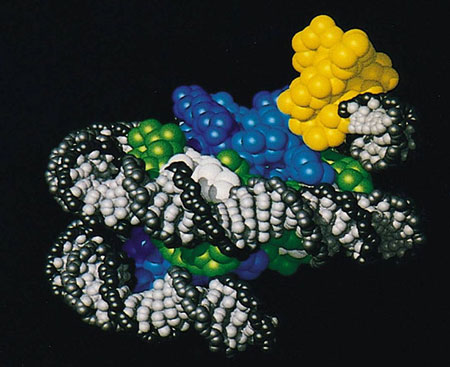 A Lawrence Livermore National Laboratory physicist and his colleagues have found a new application for the tools and mathematics typically used in physics to help solve problems in biology.
A Lawrence Livermore National Laboratory physicist and his colleagues have found a new application for the tools and mathematics typically used in physics to help solve problems in biology.
Feb 8th, 2014
Read moreResearchers have shown for the first time that 'click chemistry' can be used to assemble DNA that is functional in human cells, which paves the way for a purely chemical method for gene synthesis.
Feb 7th, 2014
Read more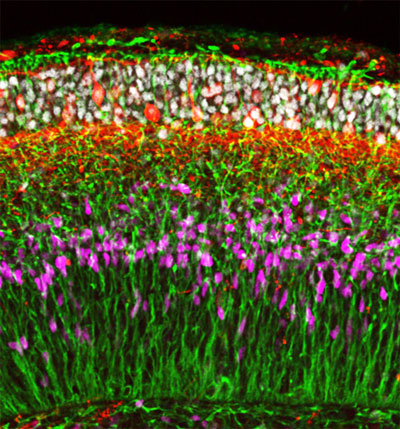 Human embryonic stem cells can be induced to spontaneously form developing brain tissue.
Human embryonic stem cells can be induced to spontaneously form developing brain tissue.
Feb 7th, 2014
Read more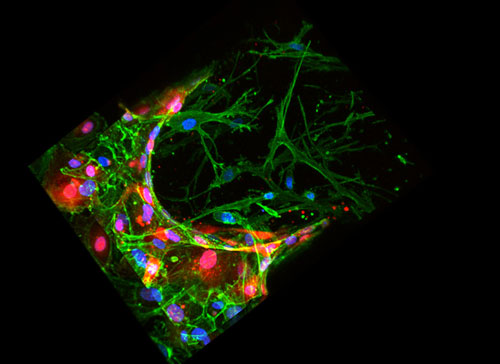 Researchers design a microfluidic platform to see how cancer cells invade specific organs.
Researchers design a microfluidic platform to see how cancer cells invade specific organs.
Feb 6th, 2014
Read more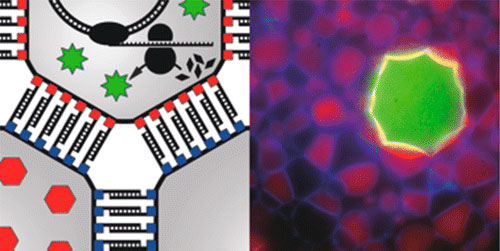 It is a big dream in science to start from scratch with simple artificial microscopic building blocks and end up with something much more complex: living systems, novel computers or every-day materials. For decades scientists have pursued the dream of creating artificial building blocks that can self-assemble in large numbers and reassemble to take on new tasks or to remedy defects. Now researchers from University of Southern Denmark have taken a step forward to make this dream come true.
It is a big dream in science to start from scratch with simple artificial microscopic building blocks and end up with something much more complex: living systems, novel computers or every-day materials. For decades scientists have pursued the dream of creating artificial building blocks that can self-assemble in large numbers and reassemble to take on new tasks or to remedy defects. Now researchers from University of Southern Denmark have taken a step forward to make this dream come true.
Feb 4th, 2014
Read more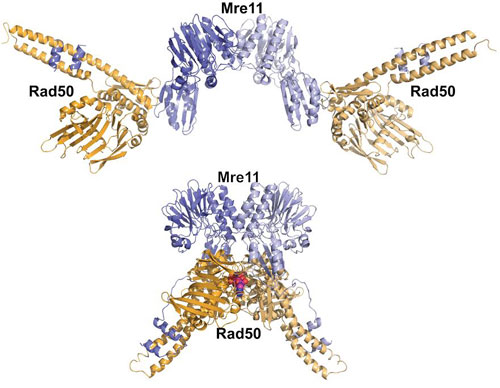 Maybe you've seen the movies or played with toy Transformers, those shape-shifting machines that morph in response to whatever challenge they face. It turns out that DNA-repair machines in your cells use a similar approach to fight cancer and other diseases.
Maybe you've seen the movies or played with toy Transformers, those shape-shifting machines that morph in response to whatever challenge they face. It turns out that DNA-repair machines in your cells use a similar approach to fight cancer and other diseases.
Feb 3rd, 2014
Read moreWhen it comes to finding cures for heart disease scientists have finally developed a tissue model for the human heart that can bridge the gap between animal models and human patients. Specifically, the researchers generated the tissue from human embryonic stem cells with the resulting muscle having significant similarities to human heart muscle.
Jan 30th, 2014
Read moreBiochemists succeeded for the first time in creating mirror-image enzymes - so-called Spiegelzymes - out of nucleic acids. The Spiegelzymes can be used in living cells for the targeted cutting of natural nucleic acids.
Jan 30th, 2014
Read moreThree new multidisciplinary research centres in synthetic biology will be established in Bristol, Nottingham and through a Cambridge/Norwich partnership.
Jan 30th, 2014
Read more